High-Performance Machine Improves Large Automotive Mold Machining
With a new generation of automotive mold applications ahead, the VG is ashowpiece that reflects Hi-Tech Mold's dedication to future innovation.
In today’s tough economy, manufacturers face increasing pressure to cut costs and find every possible efficiency to stay competitive. For companies closely tied to the recession-pounded automotive industry, maintaining business as usual takes real effort—and thriving takes true vision. Hi-Tech Mold & Engineering Inc., headquartered in Rochester Hills, MI, is one such company.
Founded in 1982 in Fraser, MI, as a four-person tool shop, Hi-Tech has rapidly grown to include more than 250 employees. In 1998, the company established a second facility in Winchester, TN, to offer Southern states a mold builder and premier change-and-repair facility. In building a reputation for excellence in quality, responsiveness and customer service, the company continues to win business across the automotive, heavy-vehicle and consumer product markets.
Their success in the face of economic adversity is a testament to the vision of the company’s leadership as well as the decision to employ reliable, state-of-the-art technology from Makino to expand their capabilities and tap new markets. Hi-Tech depends on nearly a dozen Makino machines to handle the most demanding and complex tool and mold applications.
Adding Size, Improving Productivity
To minimize leadtimes and deliver the utmost in customer service, Hi-Tech’s goal is to provide everything from co-locating program managers for concept design to prototyping and production all under one roof. This dedication to fully integrated mold manufacturing recently led the company to continued investment in large mold-machining capabilities.
“Outsourcing work is sometimes a welcome necessity, especially when business is good and you’re breaching capacity, but when times are tough you need every piece of business possible,” says Robert Schulte, Hi-Tech’s president and CEO. “In order to produce applications like our two-shot technology door panels, instrument panels and bumper fascias in-house, we needed to invest in a high-performance machine that could machine these large, complex geometry molds completely in a single setup.”
As firm believers in making smart investments, Schulte and the leadership at Hi-Tech searched for a machining solution not solely on price, feeds and speeds, but on all of the cost factors involved.
In the end, Hi-Tech’s choice of a Makino MCC2516-VG horizontal machining center wasn’t difficult. With nearly a dozen previous Makino investments, including multiple Makino MCC2013 horizontal machining centers, they knew they could expect the accuracy, repeatability, speed and productivity that Makino quoted.
“Our previous investments taught us that the true value of a machining center extends far beyond the work zone,” says Schulte. “Each Makino machine we’ve purchased has enabled us to replace several other machines and free up floor space, as well as reduce or eliminate benching procedures in multiple applications and dramatically reduce cycle times. The overall reductions in leadtimes have made us a highly competitive force in the plastics industry.
“With the MCC2516-VG we’re seeing the same results, producing as much as two of our previous machines. By bringing work in-house and improving upon several current applications, our return on investment will be complete in just a couple of years.”
Variable Geometry Capabilities
The MCC2516-VG, while similar in many ways to Hi-Tech’s other MCC horizontal machining centers, offers Makino’s Variable Geometry (VG) technology for 2+3 cutting strategies. Using five axes, VG technology can lock the spindle into any 5-axis configuration for increased access to difficult feature geometries while retaining all the benefits of a 3-axis machine.
The MCC2516-VG handles workpieces up to 118.1 inches by 70.9 inches by 74.8 inches on pallets 118 inches by 63 inches. Its semi-floating slideway system delivers a top cutting feedrate of 16 meters per minute even in the company’s heaviest workpieces. This system sends compressed air between the table slideways to automatically adjust the pneumatic pressure to handle table load changes. As a result, slideway resistance is low, reducing lost motion for any size workpiece.
The high-rigidity spindle is supported by cylindrical roller bearings and delivers a maximum speed of 12,000 rpm. For 24/7 machine usage, the MCC2516-VG incorporates a patented Makino spindle core cooling system used to internally cool the rotating spindle, ensuring minimal thermal distortion and precise spindle positioning.
The MCC2516-VG is also equipped with Makino’s unique Super Geometric Intelligence (SGI.4) control system for coordinated error compensation in all three axes simultaneously. This on-the-fly, three-dimensional compensation lets the machine track precisely to programmed toolpaths on mold contours and complex geometries, even at five times or more the feedrates of conventional large machines.
“The MCC2516-VG’s machining capabilities deliver what we need and more: high accuracies with the added benefits of minimized setups, faster cycle times, longer tool life, limited bench work and easier programming,” says Schulte. “While 5-axis machining definitely has its place in other markets, two-plus-three machining is perfectly suited for our large mold applications.”
Rough, Semi and Finish
“For the applications we’re working with, there are three critical considerations: machining capabilities, CAM programming and tooling options,” says Schulte. “With a wide range of spindle speeds, increased part access and flexible tooling capacity, the MCC2516-VG allows us to complete a part from rough to finish in a single setup.
“This is a huge accomplishment because while no shop enjoys spending valuable time setting up parts, the setup times for large automotive molds like those we produce are far more costly. By combining rough, semi and finish operations in a single setup, we’ve helped reduce our overall leadtimes by 25 percent in certain cases.”
In addition to the setup reductions required to complete a job, Hi-Tech is seeing machining time reductions of about 20 percent. And with continuous operation nearly 24/7, the VG’s minimal maintenance requirements keep machine usage high at approximately 90 percent.
Machined to Spec
Components of the automotive industry are known for tight tolerances, part release from the mold, complex geometries in pocketing where there is little room for movement, mold shutoff and mold details that have to fit together precisely. And while simultaneous 5-axis capabilities enable manufacturers to machine these complex geometries, the chance for error rises significantly.
“With each additional axis movement you add to the machining process, your error band expands greatly, and this issue only becomes more detrimental with larger molds like ours that require extended axis travels,” says Schulte. “With the MCC2516-VG’s two-plus-three machining capabilities and rigid construction, we’re able to machine intricate detail, shut-offs and finishes at the farthest extensions of each axis with labor-reduced results.”
The MCC2516-VG’s rigid 12,000-rpm spindle enables Hi-Tech to be aggressive in its tooling strategies, accommodating tool sizes up to 21.65 inches long and 7.87 inches in diameter with a maximum weight of 44 lbs. Using the 60-tool automatic toolchanger, Hi-Tech is able to produce a variety of features completely unattended.
“Just one of our large molds can contain several complex features, each requiring a unique tooling strategy,” says Schulte. “For fine features and tolerances, we can minimize cut times by running at higher rpms and increase feedrates with shorter tools. On the other hand, the spindle is rigid enough to support 10-inch tools for extremely deep pockets while still holding our desired tolerances.”
Hi-Tech also reports improved surface quality with minimal cutter deviation transitioning from one cutter path to another, oftentimes within a 3μm step between machined surfaces.
“Our molds come out of the machine virtually complete with minimal, if any, handwork required,” says Schulte. “This reduction in handwork has also allowed us to redeploy staff to other areas, further increasing the shop’s overall productivity.”
Short-Term Investment, Long-Term Benefits
“In tough times, you can’t sit back and wait for things to piece themselves back together, hoping they end up in your favor,” says Schulte. “We’ve taken this time period to aggressively pursue every opportunity to improve our business. Equipment like the MCC2516-VG is not just a short-term solution, but rather an open window for even greater opportunities in the future.
“With a new generation of automotive mold applications ahead, the VG is our showpiece that reflects our dedication to future innovation. When customers see the Makino name, they know we strive to be a leading-edge company.”
Related Content
What is Scientific Maintenance? Part 2
Part two of this three-part series explains specific data that toolrooms must collect, analyze and use to truly advance to a scientific maintenance culture where you can measure real data and drive decisions.
Read MoreMaking Quick and Easy Kaizen Work for Your Shop
Within each person is unlimited creative potential to improve shop operations.
Read MoreMMT Chats: 5 in 5 with Best Tool and Engineering
MoldMaking Technology Editorial Director Christina Fuges reveals 5 best practices for improving efficiencies within shops...in 5 minutes. Our guest is Joe Cherluck, President of Best Tool and Engineering in Clinton Township, Michigan.
Read MoreQuestions and Considerations Before Sending Your Mold Out for Service
Communication is essential for proper polishing, hot runner manifold cleaning, mold repair, laser engraving and laser welding services.
Read MoreRead Next
Automation Investment Yields Speed and Flexibility
In 2004, Industrial Molds Group took the first steps toward integrating automation to reduce both costs and turnaround times.
Read MoreHow to Use Strategic Planning Tools, Data to Manage the Human Side of Business
Q&A with Marion Wells, MMT EAB member and founder of Human Asset Management.
Read MoreAre You a Moldmaker Considering 3D Printing? Consider the 3D Printing Workshop at NPE2024
Presentations will cover 3D printing for mold tooling, material innovation, product development, bridge production and full-scale, high-volume additive manufacturing.
Read More
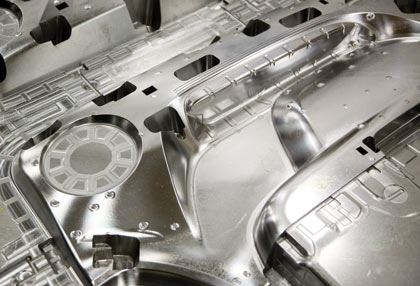
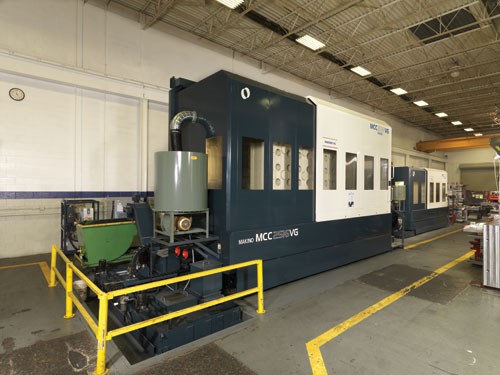
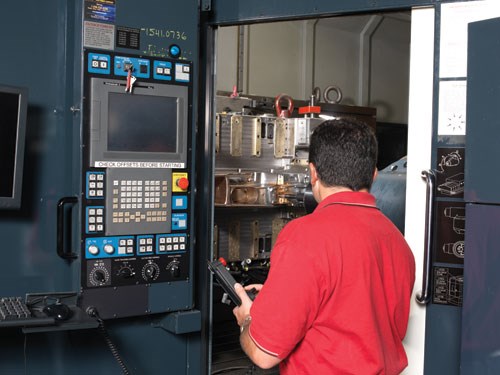
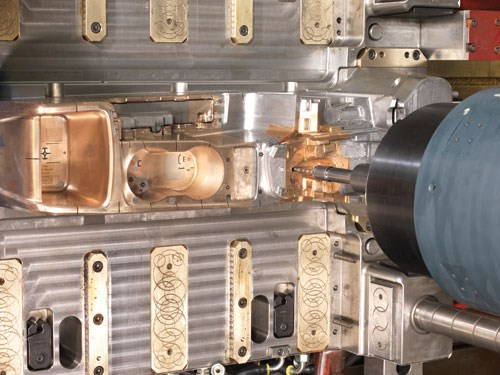
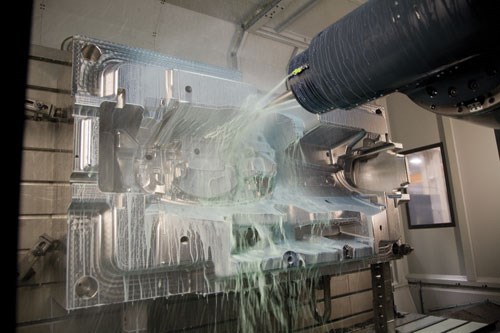
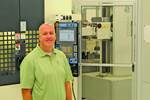
























.jpg;maxWidth=970;quality=90)